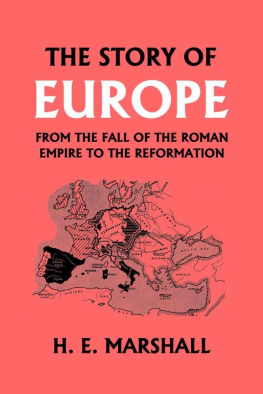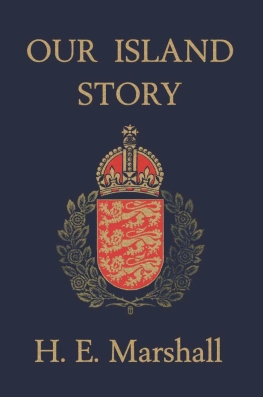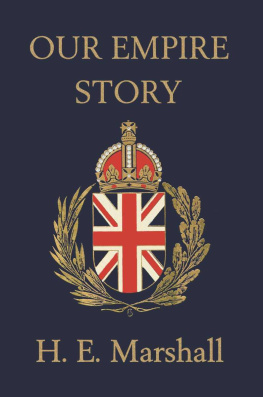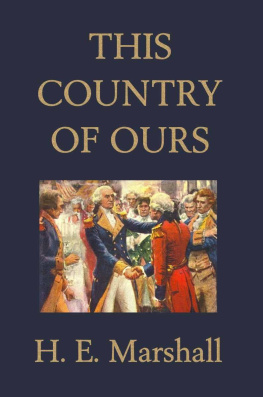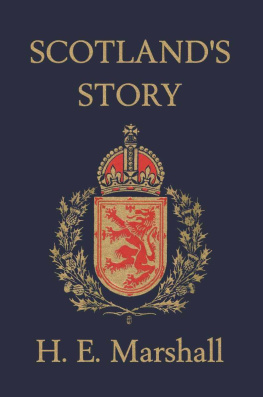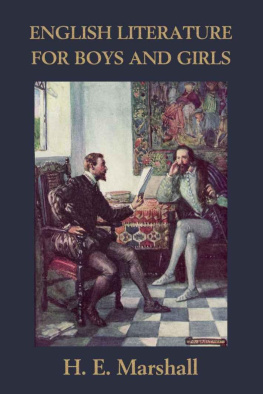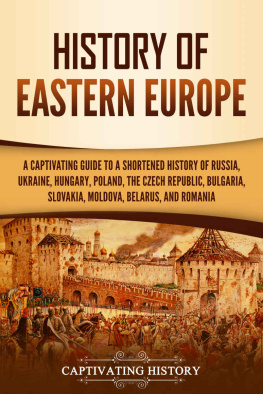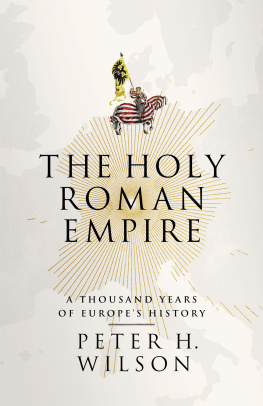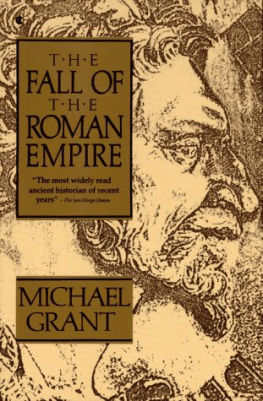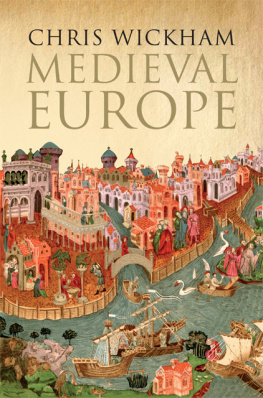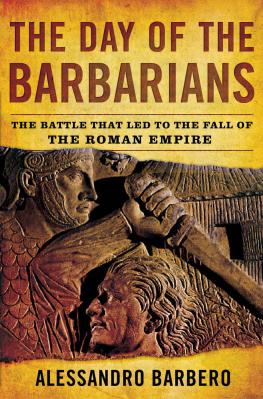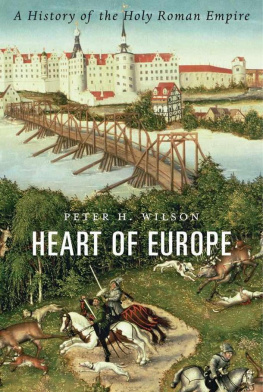The Story of Europe
by
Henrietta Elizabeth Marshall
Yesterday's Classics
Chapel Hill, North Carolina
Cover and Arrangement 2010 Yesterday's Classics, LLC
All rights reserved. No part of this book may be reproduced or retransmitted in any form or by any means without the written permission of the publisher.
This edition, first published in 2010 by Yesterday's Classics, an imprint of Yesterday's Classics, LLC, is an unabridged republication of the work originally published as A Short Sketch of European History from the Fall of the Roman Empire to the Reformation by Frederick A. Stokes Company in 1920. This title is available in a print edition (ISBN 978-1-59915-158-8).
Yesterday's Classics, LLC
PO Box 3418
Chapel Hill, NC 27515
Yesterday's Classics
Yesterday's Classics republishes classic books for children from the golden age of children's literature, the era from 1880 to 1920. Many of our titles are offered in high-quality paperback editions, with text cast in modern easy-to-read type for today's readers. The illustrations from the original volumes are included except in those few cases where the quality of the original images is too low to make their reproduction feasible. Unless specified otherwise, color illustrations in the original volumes are rendered in black and white in our print editions.
Preface
Many European histories written for school use are too long for careful study by young pupils during the necessarily limited time allotted to the subject. Many of them are overloaded with details of battles and domestic politics which, although of importance in the thorough study of one country, have little or no influence on the general growth of Europe. It is very important that students should realize as early as possible that the history of our islands has at all times been influenced by the broader movements of European history, and in this book an endeavour has been made to give, succinctly, the main factors which have gone to the forming and developing of the various European states from the fall of the Roman Empire to the Reformation, together with sufficient detail to enliven that dullness which is the almost inevitable accompaniment of great compression.
As a good deal of time is generally devoted to the history of England in the ordinary school curriculum, it has seemed unnecessary to enlarge on it here. The history of England has therefore rarely been touched upon save when (as in the Hundred Years' War, for example) that country plays a prominent part in the politics of Europe. On the other hand, considerable space has been given to the period immediately following on the fall of the Roman Empire, that being a period somewhat neglected, but which yet gives the necessary key to future developments.
To aid smooth reading the dates have been for the most part relegated to the margin. In the case of rulers the dates of the beginning and end of their reign have been given; of all other personages those of birth and death.
Contents
CHAPTER I
The Barbarians Invade the Roman Empire
I N the first centuries of our era the one great power of the world was Rome. All southern Europe bowed beneath the conquering sword of the Romans. Africa and Asia, too, owned their sway. For the Mediterranean, the great trade route of the then known world, was theirs, and the countries bordering upon it became mere provinces of Rome. Even the uttermost islands felt their might, and sailing beyond the "narrow seas," Csar set his hand upon the island of Britain. From the Rhine and the Danube in the north, to the desert of Sahara in the south, from the borders of Wales in the west, to the Euphrates and the Tigris in the east, the empire stretched.
Of this wide empire Rome was the capital. Secure upon her seven hills she sat, mistress of the world, a city without rival, until in A.D. 330 the Christian emperor Constantine the Great resolved to build a new Rome upon the shores of the Bosphorus. Constantine called his new city New Rome. But men did not take readily to the name, and the capital upon the Bosphorus became known as Constantinople, or the city of Constantine. It is difficult to-day to remember that Constantinople was founded by a Christian, and was at one time the bulwark of Christianity against the Turk.
The Romans called themselves lords of the world. And so it seemed they were. All the trade and skill, all the art and learning of the known world, were theirs. Beyond the borders of the Roman Empire the world was given over to wild barbarians, who were skilled neither in the arts of war nor of peace. That the civilization of Rome should go down before their ignorance seemed impossible. Yet the barbarian triumphed, Rome fell, and the mighty empire crumbled into dust.
"Rome was not built in a day," neither did Rome fall in a day. The fall was gradual, and came both from without and from within.
It came because there was tyranny in Rome, and no state can long be held by tyranny and the power of the sword alone. The high officials and tax collectors cared nothing for the people's good, they cared only for gold. They laid heavy and unjust taxes upon the middle classes. These classes must always be the backbone and support of a nation, but in Rome's last days they were so oppressed that they ceased to exist. The backbone of the nation was gone. So when wild barbarian hordes poured over the borders of the empire Rome fell.
When the Emperor Theodosius died, about sixty years after the founding of Constantinople, he left two sons, both mere boys. They divided the empire between them, Arcadius, the elder, taking Constantinople for his capital, ruled over the Eastern Empire, and Honorius, a child of eleven, became ruler of the Western Empire, with Rome as his capital. It was upon Rome and the Western Empire that the full force of the barbarian onslaught fell.
First came the Goths. These were Teutons or Germans, and were divided into two tribes, the Visigoths or west Goths, and the Ostrogoths or east Goths. They were tall and strong, their eyes were blue, their hair long and fair. They were lawless, greedy, and treacherous. They came at first fleeing from the Huns, a far more barbarous foe, seeking shelter beneath the still all-powerful sceptre of Rome. They found the protection they desired, but ere long they turned their swords against the men who had provided it.
The March of Alaric
Under their young king Alaric, the Visigoths attacked the empire again and again. Twice Alaric laid siege to Rome. Twice he spared the imperial city. Still a third time he came, and this time he sacked and plundered it without mercy. Then, laden with rich booty, driving a long train of captives before him, he turned southward. The proudest city in the world lay at his feet, and flushed with victory, he marched to invade Africa.
But an even greater captain than the conqueror of Rome met him on the way. Death laid his hand upon the victorious Goth, and all his triumphs were blotted out. The new king of the Goths, Ataulphus son of the Wolf, did not follow up Alaric's triumphs. He turned aside from Africa, forsook the wasted plains of Italy, and marching his war-worn followers into southern Gaul and northern Spain, settled there.
Meanwhile other barbarian hosts attacked the outposts of the empire. For in a vain endeavour to guard Italy and Rome itself the last legions had been called back even from Britain, and the northern boundaries of the empire were left a prey to the barbarians.
Over the wall which stretched from Forth to Clyde stormed the Picts and Scots, across the Rhine and the Danube poured wild hordes of Franks, Burgundians, Lombards, Allemanni, and Vandals. The Franks settled in Gaul, and made it Frankland. The Burgundians, too, settled in Gaul, and to-day the fair province of France lying between the Loire and the Sane still keeps their name. The Vandals settled in Spain, of which a province is still named Andalusia (Vandalusia). The Lombards, or Longbeards, overran northern Italy, and to-day the central province of northern Italy is still named Lombardy. Angles and Saxons left their homes on the Weser and the Elbe, sailed across the sea, and taking possession of southern Britain, changed its name to England.

